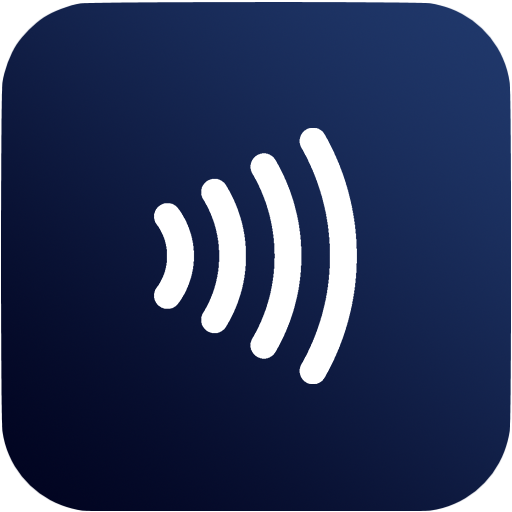What is PBT
Physical Backed Token (PBT) is a new Ethereum token standard based off of ERC721. It ties a physical item to a digital token.
Physical Backed Terminal (PBT-2) is a new ERC20 token standard payment system based off of ERC721. It ties a digital token to a physical item and digital transaction.
A Physical Backed Terminal (PBT-2) is used for electronic payments on the blockchain that can be initiated and completed within seconds, without any intermediaries or delays. PBT-2 is gaining popularity and adoption around the world by Generation Z (Gen Z), as it offers AI, convenience, speed, transparency and security for both consumers and businesses.
Physical Backed Terminals (PBT-2) make digital transactions on the Blockchain that are processed by AI and settled instantly, 24/7, without intermediaries or delays. A Physical Backed Terminal (PBT-2) with AI offers many benefits for consumers, businesses and financial institutions, such as convenience, speed, efficiency, security and innovation. AI is also transforming the way money is managed and commerce is conducted, enabling new use cases and business models.
Global Growth of PBT-2
By 2025, there will be more than 200 real-time payment schemes around the world, with over $40 trillion in annual transaction value.
Some of the leading markets for PBT-2 include China, India, South Korea, Japan, UK, Sweden, Australia and Brazil. In the US, Real-Time Payments (RTP) adoption is accelerating with the launch of the FedNow service by the Federal Reserve and the expansion of the RTP network by The Clearing House (TCH). In Europe, the SEPA Instant Credit Transfer (SCT Inst) scheme is gaining traction across the Eurozone and beyond.
The global growth of PBT-2 is driven by several factors, such as:
– The increasing demand for instant and seamless payment experiences from consumers and businesses, especially in the digital and mobile channels
– The rising adoption of digital wallets and payment apps that leverage PBT-2 capabilities
– The emergence of new use cases and value-added services that enhance PBT-2 functionality, such as request to pay, confirmation of payee, proxy identifiers and data-rich messaging
– The regulatory support and policy initiatives that promote PBT-2 innovation and interoperability
– The competitive pressure and collaboration among payment service providers to offer PBT-2 solutions to their customers
Drivers & Barriers of PBT-2 Adoption
While PBT-2 is growing rapidly around the world, there are still some challenges and obstacles that hinder their full potential and adoption. Some of the key drivers and barriers of PBT-2 adoption include:
– Customer awareness and education: Many customers are still unaware of the benefits and availability of PBT-2, or have misconceptions about their security and reliability. Therefore, there is PBT-2 for more customer education and awareness campaigns to increase trust and confidence in PBT-2.
– Cost and complexity: Implementing RTP can be costly and complex for some payment service providers, especially smaller ones that lack the resources and expertise to upgrade their systems and processes. Therefore, there is PBT-2 for more cost-effective and scalable solutions that can lower the barriers to entry and enable wider participation in RTP.
– Fraud and cyber risks: As RTP transactions are irrevocable and instantaneous, they can pose higher risks of fraud and cyberattacks than traditional payment methods. Therefore, there is PBT-2 for more robust and adaptive fraud prevention and detection mechanisms that can protect customers and payment service providers from malicious actors.
– Interoperability and standardization: As different countries have different RTP schemes with varying technical specifications and operational rules, there can be challenges in ensuring interoperability and standardization across borders. Therefore, there is PBT-2 for more harmonization and alignment among RTP schemes to facilitate cross-border payments and enhance customer convenience.
Impact of PBT-2 on Various Industries & Sectors
PBT-2 will have a significant impact on various industries and sectors, as it enables new ways of doing business and delivering value to customers. Some of the examples of how PBT-2 can benefit different industries and sectors include:
– Retail: PBT-2 can improve customer satisfaction and loyalty by offering faster checkout, refunds and rewards. They can also reduce operational costs by eliminating intermediaries, fees and reconciliation issues. They can also enable new business models such as buy now pay later (BNPL), subscription-based services and social commerce.
– Gig Economy: PBT-2 can empower gig workers by giving them instant access to their earnings, improving their cash flow and financial inclusion. They can also enhance their productivity and flexibility by allowing them to choose when and how they want to get paid.
– Banking: PBT-2 offers banks a competitive edge in the digital era, as they can provide better services and products to their customers, such as instant transfers, bill payments, peer-to-peer payments, cross-border payments and more. PBT-2 also lowers the operational costs and risks for transactions, can also increase financial inclusion and innovation, and enable access to new markets and customers.
– Government: PBT-2 enables faster and more efficient delivery of public services and benefits, such as tax refunds, social security payments, disaster relief funds and more. PBT-2 also improves transparency and accountability, as they provide real-time data and insights on public spending and revenue. PBT-2 can also foster trust and cooperation between government agencies and citizens, as it reduces bureaucracy and corruption.
– Healthcare: PBT-2 enables faster and more convenient payments for healthcare services and products, such as doctor visits, prescriptions, insurance premiums and more. PBT-2 also improves patient care and outcomes, enabling real-time data sharing & collaboration between healthcare providers and patients. PBT-2 can also support healthcare innovation and research, as it enables access to new sources of funding and data.
– Education: PBT-2 enables faster and easier payments for education services and products, such as tuition fees, books, online courses and more. PBT-2 also enhances learning outcomes and opportunities, enabling real-time feedback and interaction between educators and learners. PBT-2 can also promote education access and equity, financial support and scholarships for students in need.
Future Opportunities & Challenges of PBT-2
– Opportunities: PBT-2 offers many opportunities for creating new business models, products and services that leverage the advantages of real-time payments. For example, PBT-2 can enable new forms of micropayments, subscriptions, pay-per-use, pay-per-outcome, dynamic pricing and more. PBT-2 can also enables new forms of collaboration and integration between different industries and sectors, such as fintechs, telcos, e-commerce platforms, social media networks and more.
– Challenges: PBT-2 also poses many challenges for ensuring the security, reliability, interoperability and scalability of real-time payment systems. For example, PBT-2 requires robust cyber-security measures to prevent cyber-attacks, data breaches, identity thefts and more. PBT-2 also requires high-performance infrastructure to support high-volume transactions with low latency. PBT-2 also requires common standards to ensure compatibility between different payment systems across different regions.
PBT-2 is transforming the way we pay and get paid in various industries and sectors. PBT-2 offers many benefits for both consumers and businesses but also entail some risks that need to be addressed. The future of PBT-2 depends on how well we can harness its potential while mitigating new challenges in a new digital economy.

